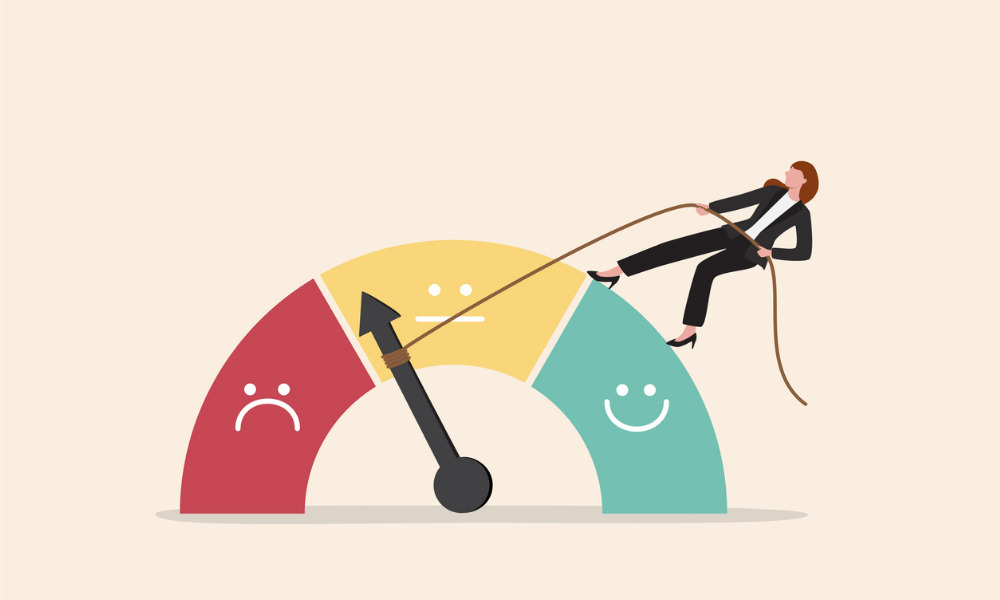
CEO reveals the importance of wellbeing as opposed to 'wellness', discusses how it can increase resilience

Over the last three years, companies have seen the importance of being able to cope with change. This means building a resilient, high performing team - and according to Corporate Crayon founder & CEO Evelyn Jackson, resilience is a skill influenced by wellbeing.
Employee wellbeing has been a hot topic among businesses for the last few years, but Jackson says that a lot of the focus has been placed on ‘wellness’ programmes, gym memberships and flexible working. By contrast, a strategic wellbeing program is all about how your work environment impacts your mental and physical health, and how connected you feel to your work and organisation. Employee wellbeing relates back to employee energy, it’s how your staff and employees feel within your organization and the impact it has on their life..
To properly assess wellbeing levels, companies need to look at several key factors. To help with this process, Corporate Crayon launched an additional service this year for their clients: an Employee Workplace Wellbeing Assessment - a tool based on the Barrett Model
“Post-COVID, it’s really been brought to the forefront that wellbeing impacts an employee’s ability to perform,” Jackson told HRD.
Level 1 of the Assessment looks at very basic physical needs, which is often related to health, security and safety. The following levels look at relationships, competence, growth, autonomy and self expression, as well as the social aspects of being in a workplace - something that’s clearly been very influenced by COVID, and working from home. Areas like interconnectivity and of course contribution.
It examines what communication is like when employees are in the office, and whether or not they can be their authentic self and the impact this has on their wellbeing.
Once the assessment has been completed, Corporate Crayon will analyse the results based on its extensive background and knowledge of behavioural psychology. It will then produce a report detailing the organisation’s strengths and weaknesses, and will provide actionable suggestions for next steps. As an internal communications agency focussing on understanding talent, Corporate Crayon works with organisations to unpick, recommend and create solutions to address these strengths and stressors. Giving the orgnaisation all of the necessary tools to effectively implement the results, creating impactful change.
“We give very specific recommendations for what organisations can do to increase wellbeing and help them communicate their programmes effectively.” Jackson says.
“You could put in place programmes that support positive co-worker relationships, for example, or implement a system that supports how work gets done so that people feel like they can cope with their workload, build in e-learning modules to address the stressors within the organization and so forth... We help organisations to create the resources they need to address any specific areas.”
Jackson says that ultimately, wellbeing affects our ability to be resilient and cope with change - something which has become a much bigger need within organisations over the last few years. She says that by analysing and improving wellbeing, companies will increase their overall resilience levels. Allowing organisations to foster a high-performing workplace.
“You can even allow people to be quite comfortable in change, as opposed to just coping,” she says.
“You’re trying to avoid things like burnout, and people leaving the organisation because they don’t feel connected. The Wellbeing Assessment can tell a company what they can do to hold on to their best talent and importantly ensure they are working at their optimum.”
The Employee Workplace Wellbeing Assessment has already been conducted extensively by organisations overseas, and the results speak for themselves. Organisations using the tool have reported that over 32% of their people are less likely to quit, 125% less likely to experience burnout, a 41% lower absenteeism and they’re seeing a 6x increase in employee engagement.
It has also been reported to have positively impacted the mental health of employees by 20%, and physical health by 17%.
“It’s not just about helping people with their physical and mental health, but why it’s important more holistically for your business and for society as a whole.” Jackson concludes.
“We can help a business by helping your people be able to do their best work.”
To find out more about the Employee Workplace Wellbeing Assessment and how it can help you increase engagement and resilience, click here.